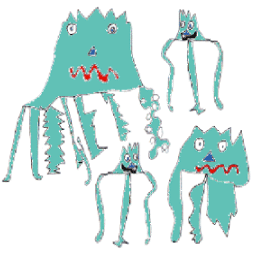Copyright © University of Cambridge. All rights reserved.
'Zios and Zepts' printed from https://nrich.maths.org/
Show menu
Why do this problem?
This problem focuses on numbers that are multiples of 3 and 7 and offers a motivating context in which to develop instant recall of them. It also provides an opportunity for learners to discuss alternative strategies and to consider the merits of each.
Possible approach
Children enjoy considering strange forms of life in imaginary planets and these weird creatures with odd numbers of legs should appeal to them. You could begin by telling the story in more detail and introducing a simpler version of the problem, for example, if Nico saw 6 legs what creatures might he have seen? And how about 14 legs? Or 13 legs? Ask them to work in pairs, perhaps on mini-whiteboards, to think about these first challenges. As they work, observe different ways of recording and thinking about the problem which you can share with the whole group.
At the end of the session learners could share not only their solutions but also their methods. Some may have used a trial and improvement approach, either with the materials provided or using pictures; some may have written lists of multiples of 3 and 7 in a very systematic way and then made totals. Children could consider whether some strategies were more effective than others, although of course a strategy that is effective for one child may be very confusing for another. Having the freedom to approach this problem in any way is key here, but in talking to others, some pupils might change the way they work, which is interesting in itself.
Key questions
Possible extension
Learners could investigate other possible numbers of legs of a group of Zios and Zepts. Perhaps some can be done in more than one way. How many ways can be found for each target number? The investigations can go on and on!
Possible support
Starting with lower totals and using practical equipment to support them will help some children. They may like to write down all the multiples of 3 and 7 as an aid. Some children might benefit from trying the Starfish Spotting problem first which involves just multiples of 2 and 5, and lower totals.
